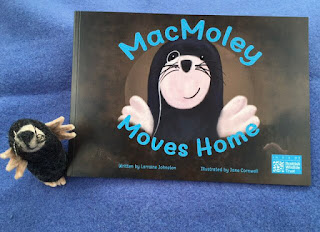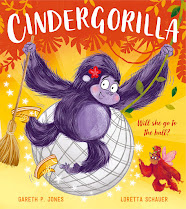Being a writer means dealing with rejection, but what happens to the stories that never made it? Do you look at them with sadness, shame or regret? Do you still have hope that will one day they will find homes? Can you bear to read them? Every writer is different, so I asked the question on Twitter.
I had 50 replies from a wide selection of writers. These replies were interesting, revealing, helpful and heartening and this blog is an attempt to summarise them.
Reject the Rejects
Personally, I rarely look at my rejected books. The way I deal with rejection is to emotionally detach myself from the work and begin work on something new. I'm not the only one. Children’s author, Sally Nicholls replied, “I have quite a short statement span when it comes to ideas and have usually moved onto something else.”
Animator/Illustrator Steve May replied: “They sit in a folder & never really get revisited because they all feel a bit 'tainted'.”
Tainted is a great word. I feel like these unloved ideas have let me down – although it’s more likely that I’ve let them down. As author/publisher, Lucy Courtney points out, this is especially gruelling with certain picture books. “It’s the carefully worked rhyming texts that kill me. Too good to bin! Not good enough to publish! Impossible to revise!”
But are we being too hard on our previous efforts? Books are rejected for all kinds of reasons and so much is about timing, luck and circumstances. And sometimes it’s impossible to completely move on. Picture book author Dr Fiona Barker replied, “Some of them go and sit quietly in a corner, ashamed of themselves. But others won’t keep quiet and are quite demanding and high maintenance.
Recycle & Reuse
A lot of the replies revealed a Frankenstein-like approach. Author/illustrator, Paul Linnet wrote: “I dismantle the stories and use them for parts.”
Writer/editor Sean McSweeney finds it helpful to give his stories a cooling off period before going back to “plunder bits for other work.”
Bloomsbury commissioning editor/author, Jonathan Eyers agrees. “All the good stuff gets cannibalised eventually. I've even lifted descriptions and dialogue from one project to another, and sigh secretly with relief that the earlier one didn't get published because things work better in the later one.”
Author, Ashok Banker replied, “I mine them for material. I'll often lift characters, plotlines, even entire chapters and then revise extensively and use it in the new work.”
Here we see writers are plunderers, miners and, er… cannibals, but I enjoyed hearing this more positive approach. Writer/editor Roz Kay wrote a novel that was rejected by everybody for several years so she “took two of the chapters, buckled them together, and called it a short story, which was selected for publication in an international competition.”
Unpublished Not Unloved
Teen fiction author, Tamsin Winter reminds us that unpublished isn't the same as unsuccessful. “My son insists on me reading one of them again and again,” she replied. “It’s a hit in our house.”
Writer/Photographer Lou Abercrombie keeps the faith. “I completely believe in all of them! I can't bear to think of them as never being read by someone.” We’ve lived with these characters so long, it can be hard to let them go. Author/Artist/Lecturer NJ Simmonds wrote, “It’s weird to love fictitious people then never see them come to life.”
For writers such as Lorraine Johnson, self-publishing is the answer. “I was given good feedback but a ‘don’t feel enthusiastic enough to proceed’ kind of knock backs. I self-published it and it’s doing well!”
Lost Stories Found
So many of the replies were 'good news' stories. Author/Academic, Jo Nadin said, “They sit in a folder called ‘books in need of a home’. Every few years they get resubmitted elsewhere (and sometimes to the same place), and every so often they get accepted. Markets change. Editors move.”
Author, Kerry Drewery’s latest novel, The Last Paper Crane was initially rejected, but she told me, “It sat on a shelf for a few years and then with advice from new editor, I tweaked it and it found a home.”
Anna Wilson writes books for adults and children and her next picture book "went around the houses, but found a home eventually and now it looks STUNNING!”
Picture Book Den children’s author, Clare Helen Walsh said, “I have a picture book coming out in 2022 that I first wrote at the end of 2018. I came back to it twice before getting it just right. There was something about it.”
New York based picture book author. Naomi Danis wrote to tell me: “Several of my picture books got published after ten or more years of being rejected. Enough of the rejections included some words of encouragement to keep me going. I submitted I HATE EVERYONE for 11 years, and WHILE GRANDPA NAPS for 17 years. I'm never sure if it is encouraging or discouraging for people to learn it can take so long.”
I don’t about you, but it gives me great hope to hear so many accounts of authors who didn’t give up on their work and who rejected rejection and found acceptance. Or, as children’s author, Emma Read put it, “I really needed to read this today. There is hope for the unloved stories after all.”
Gareth P Jones is the author of 45 published books – and countless more that lie in the dark recesses of his computer. After writing this blog he's thinking of going back and looking at them. His published works include The Thornthwaite Inheritance, Solve Your Own Mystery: The Monster Maker, Rabunzel and CinderGorilla.
And if you want to read the full twitter thread, you can find it here.








No comments:
Post a Comment